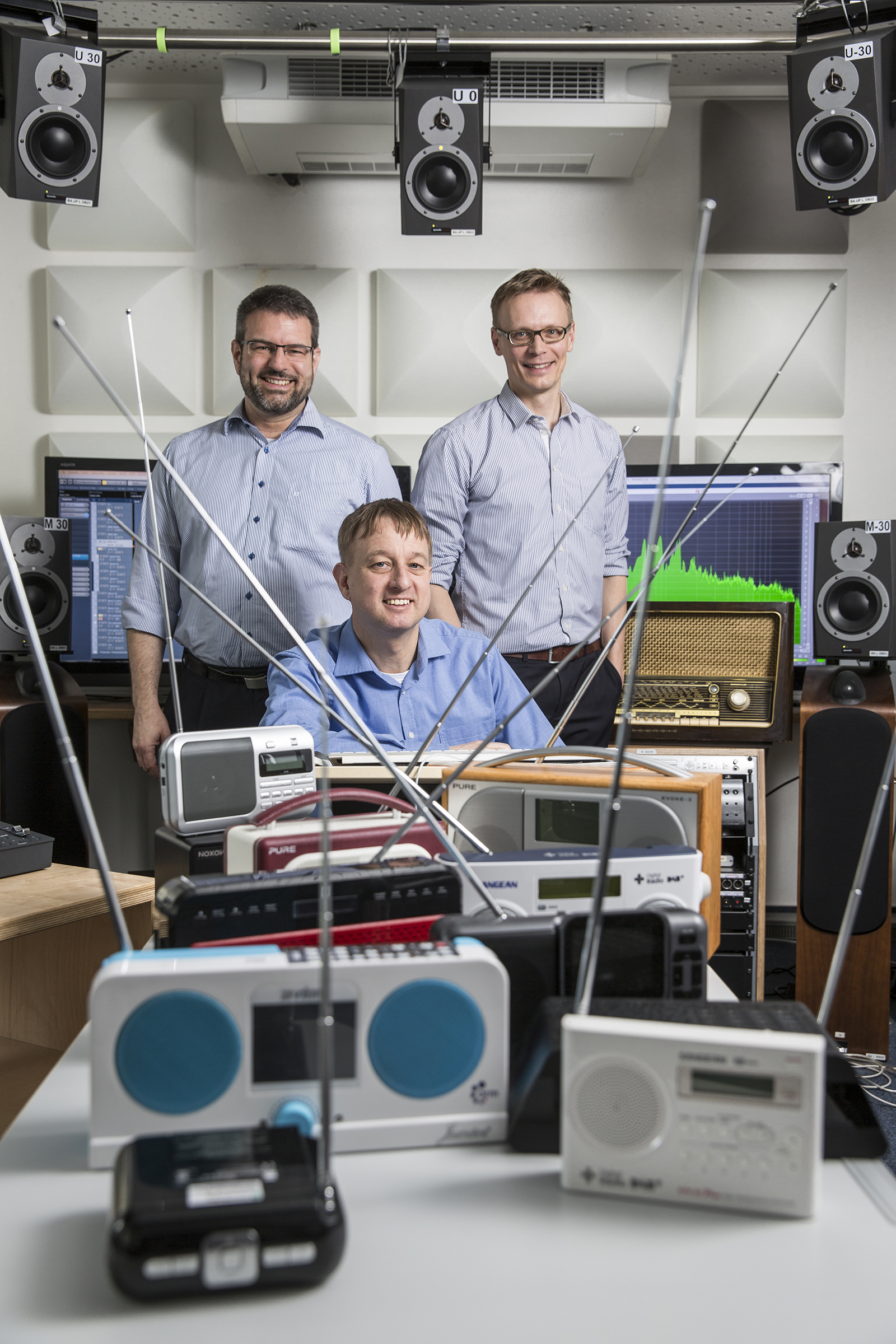Digital Radio for the World
Digital radio makes spherics and crackling interference in radio broadcast a thing of the past. New technologies from Fraunhofer IIS make it possible for digital radio to replace analogue short and medium wave broadcasting around the world. Even local FM transmissions are being converted to digital. As a result, Digital radio listeners benefit from clear reception, a wider range of programming, and additional information via data services without having to pay for a costly Internet connection.

Alexander Zink, researcher at the Fraunhofer Institute for Integrated Circuits IIS based in Erlangen, Germany, would like to provide clarification around a common misunderstanding: »Digital radio works the same way as terrestrial FM radio via air waves, but with better quality, more variety and innovative extra features. Digital Radio is independent of the Internet and available to the listener free of charge.« Together with Martin Speitel, Max Neuendorf and an extensive team, Zink developed several necessary basic technologies, as well as transmission and receiving solutions for digital radio applications. Today, these technologies are utilized around the world in nearly all digital radio systems.
Digital Radio Already Established Worldwide
Digital radio is already implemented throughout the majority of Europe. Many developing countries are in the planning stage to convert from analog to digital for short and medium wave, and the digitalization of local FM broadcasts is in development as well. For instance, India is among the front-runners for digitalization, and on its way to becoming the world‘s largest digital radio market.
In addition to audio quality, digital radio’s innovative technology offers critically important advantages to radio listeners, manufacturers and radio broadcasters. For example, the data service Journaline makes it possible for listeners to interactively access and read text information such as news, weather, and traffic or airport updates directly from the radio receiver‘s screen. »Even in the age of the Internet, radio systems continue to serve as the most reliable distribution medium for news and emergency alarms. Especially in countries where Internet infrastructure is poor or non-existent, the new solutions allow access to information and education on a wide-scale basis and free of charge,« says Alexander Zink, emphasizing the political dimension of the Fraunhofer development. For broadcasters, Digital radio offers benefits such as more efficient program transmission, which cuts costs by reducing broadcast energy consumption and also allows for transmitting a larger number of programs. Deutschlandradio, the national German public radio broadcaster, has benefited from the advantages of Digital radio for several years. »There aren‘t enough FM frequencies available. Digital broadcasting is the only way we can cover the entire area,« says Deutschlandradio director Dr. Willi Steul.
Technologies for the Entire Broadcast Chain
The Fraunhofer IIS scientists design technologies and components along the entire digital radio broadcast chain. These technologies and components include innovative audio encoding methods, as well as server solutions for coding and generating digital radio transmission signals and software components for radio receiver devices. The MPEG audio codecs xHE-AAC and HE-AAC process data intelligently, reducing data volumes drastically while retaining quality levels. »The xHE-AAC and HE-AAC codecs are the foundation of digital radio‘s excellent sound quality. Our experience with mp3 and the subsequent technologies served as a good measure for those developments,« says Max Neuendorf, group manager of the IIS Audio and Speech Coding team.
For radio receivers, new software solutions were developed to support reception and playback of digital radio. »The signal you receive via the antenna in digital form is then reconverted back into audible form, just like the principle used in every conventional radio. Thanks to our flexible solution, radio and chip set manufacturers can easily support a large number of digital radio standards in parallel,« explains Martin Speitel, manager of the Software Defined Radio project at the IIS. To support broadcasters with the introduction and operation of Digital radio, the scientists developed an easy-to-operate server solution. »Our ContentServer technology today is one of the most widely used professional broadcast systems. It combines the individual components such as audio encoding, data applications and signaling management, as well as multiplex generation in a single device. This makes it easy for broadcasters and network providers to configure digital radio transmission signals. It also allows broadcast and network providers to take advantage of the entire range of Digital radio functionality,« explains Alexander Zink, responsible for the worldwide standardization and market development of digital radio.
Alexander Zink, Martin Speitel, Max Neuendorf and the entire development team accepted the Joseph-von-Fraunhofer Prize 2016 for developing the foundations of digital radio and its continuation to market roll-out. The jury recognized „the steady advancement of fundamental technologies and standards established in this area. For several years, Fraunhofer IIS has been able to make progress and develop groundbreaking technologies for digital radio.“